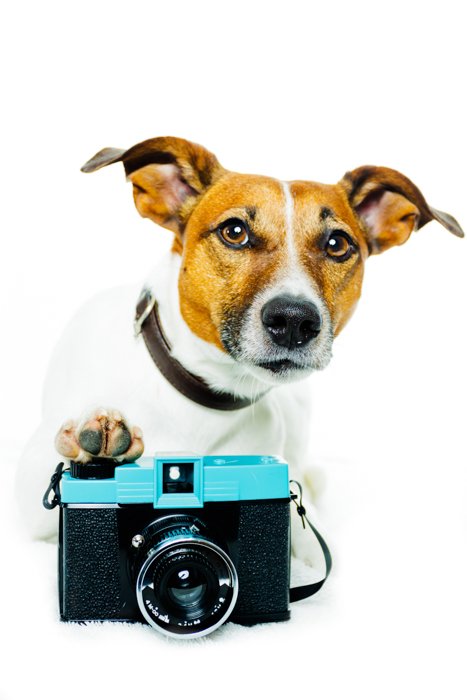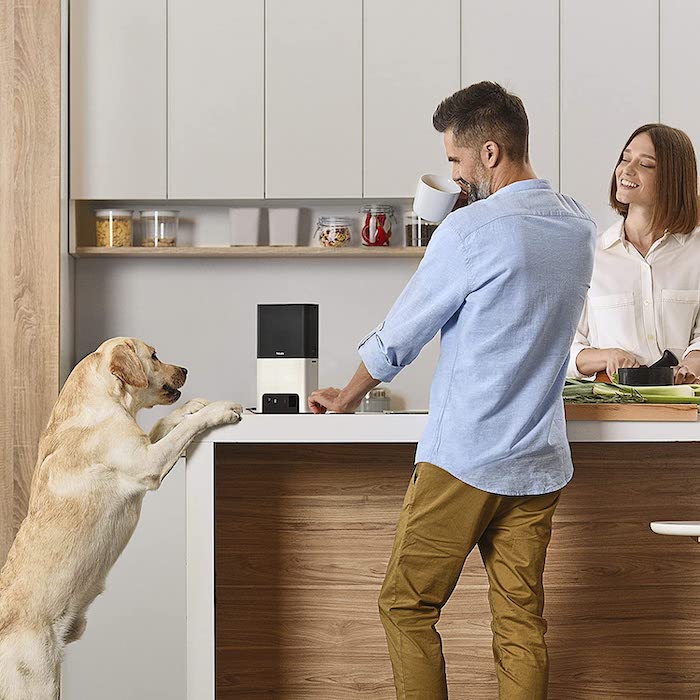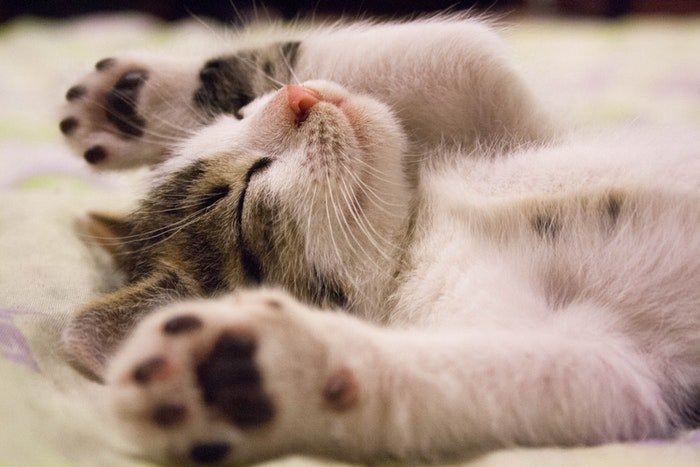Pet photography is a popular photographic niche these days. It can be photos of your furry friend for your Instagram feed. Or perhaps they are professional dog show pictures.
Knowing how to photograph pets is also a great way to practice better photography in general. You don’t need a pet photography studio to take perfect images. Read on for all the information you’ll need.
What Is Pet Photography About?
Photographing your pets is about capturing personality, funny and sweet moments, and habits. It requires a certain set of skills and patience to tackle.
You might be taking photos of your own pets. Or maybe you start pet photography as a business and snap pics of pets that belong to another family.
Either way, pets are unpredictable and fast (unless you have a snail or a turtle). So this provides you with all the candid opportunities you need to improve. But it will test your skills as a photographer.
Some photographers step away from this natural, candid photo-taking and opt for portraits. But people are much easier to direct than an animal. Luckily, pets will do most things for a snack or treat.
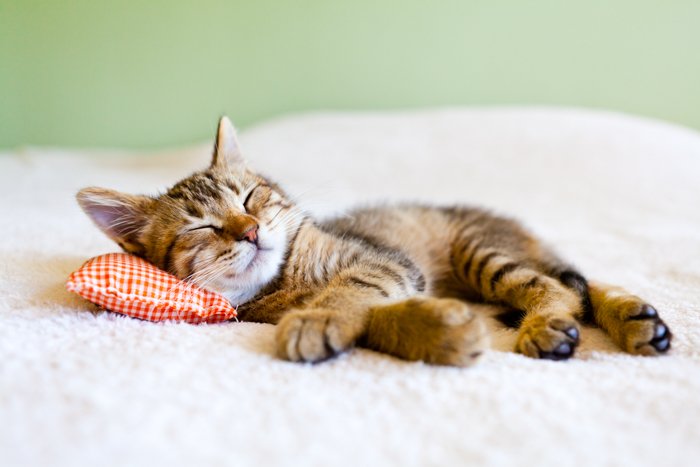
Camera Equipment
How to Pick the Right Lens for Pet Photography
Lenses are what make your photo what it is. A differential focus comes from the aperture on your piece of glass. The wider the aperture, the less of the scene will be in focus.
The background becomes increasingly blurry because of the shallow depth of field. This adds interest to your image and cuts out distractions.
A wide-angle lens offers you a broader perspective of the scene. It can cause distortions. But it can benefit pet portraits by capturing more of the scene.
A telephoto lens lets you shoot from a distance, which is less distracting for your pets. Also, they cause less distortion than wide angles do. And you can try macro lenses to capture extremely sharp details in your photos!
Having a few different lenses will give your photography more flexibility.
6 Reasons Why You Should Use a Telephoto Lens for Pet Photography
A telephoto lens is a great way to capture scenes without being in the immediate area.
This is a great way to stay out of your pets’ zone to capture those candid shots. It prevents your pet from being distracted by you, your camera, or your camera’s noises.
This is also a great way to deal with shy or unruly dogs. It allows the pets to keep their distance.
Telephoto lenses also produce a natural perspective free of distortion and a shallow depth of field.
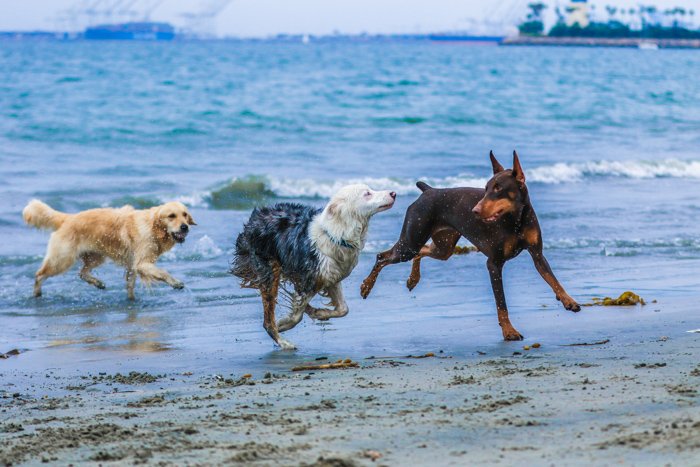
Pros and Cons of Using a Prime Lens for Pet Photography
A prime lens means that the focal length is fixed. You can’t zoom in or out with this type of lens. Instead, you must move yourself to tighten or broaden your framing.
What a prime lens can offer you is quality and a wide aperture. The wide aperture is perfect for low-light situations and getting that small area in focus.
Prime lenses are also smaller than zoom lenses. So they make it easy to move around. For example, this is beneficial when hiking with your dog.
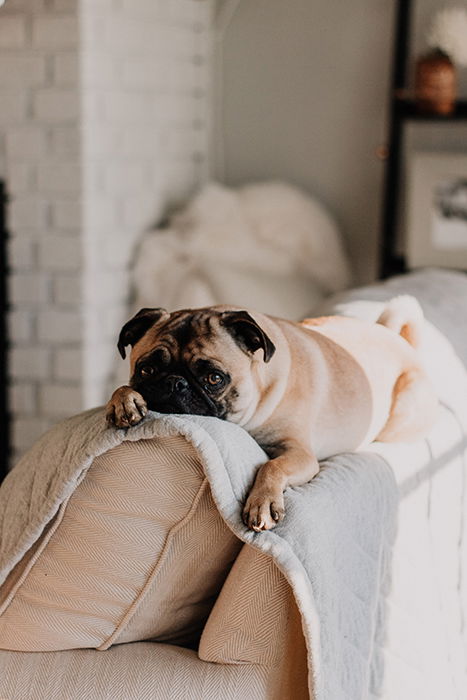
What’s In a Pet Photographer’s Bag
A pet photographer will have more in their bag than just a camera kit. They will need accessories like an off-camera flash and a lens cleaning kit.
To get pets’ attention outdoors, toys and treats will make you approachable. Pets will also take direction if they know they will get something out of it.
Business cards are also a great idea. You might encounter other pet owners while you’re on a shoot. And they are potential clients if you do this for a living.
Plus, extras of everything ensure you won’t miss that shot. You don’t want to cut a session short because a lead snapped or your battery died.
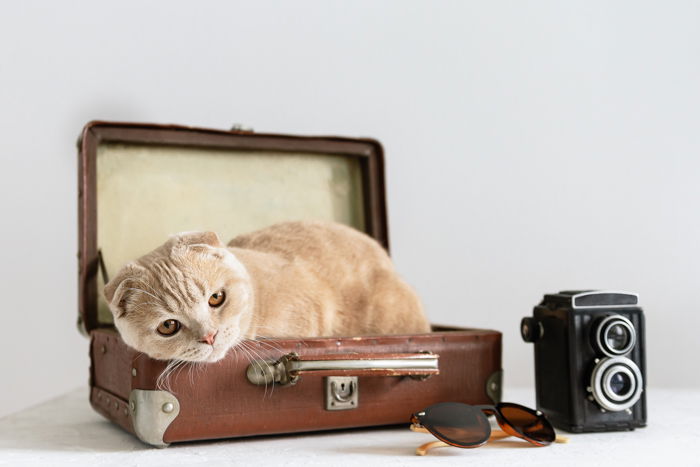
Camera Settings
Best Exposure Settings for Pet Photography
Exposure is the amount of light that enters your camera and hits your sensor.
The correct settings depend on lighting conditions, the weather, and the kind of photos you’d like to take during the session. It works just like when you photograph humans.
If you prefer a shallow depth of field, you should always have your aperture wide open and adjust the other settings.
Prepare in advance for sunny and cloudy days as well. And learn the settings to use during golden hour or with uneven lighting. Knowing the differences between a photo session outdoors and in a studio is also helpful.
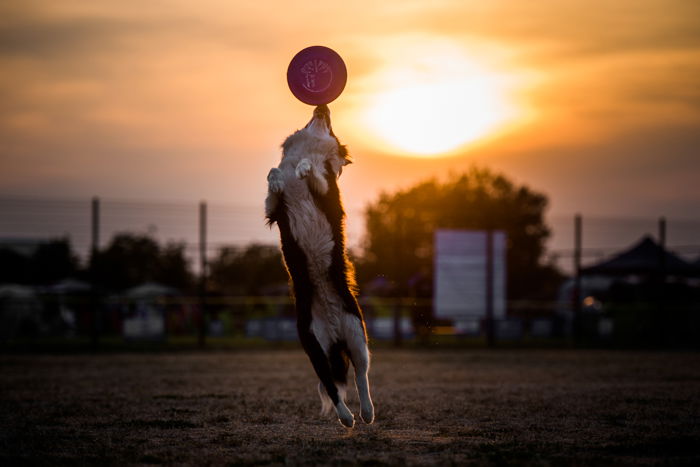
How to Photograph Your Pets
Pet Photography Cheat Sheet: Easy Tips to Follow
A cheat sheet ensures you quick hints for what you want to photograph.
Our cheat sheet lists a few important things you need to know about pet photography. And it covers different details you need for the best images.
For instance, If you photograph multiple pets, ensure they’re at the same level for the best focus. And you will also benefit from having treats and a toy around to minimize distractions.
Plus, we have more extensive photography cheat sheets, no matter what pet photography you want to create.
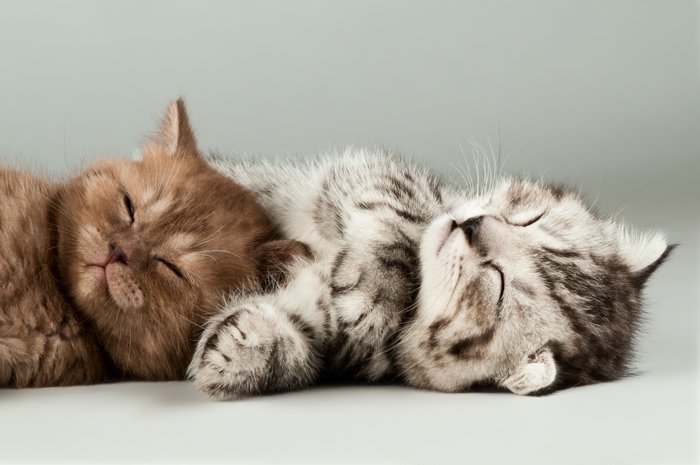
One Light Pet Photography Portraits
Most photographers instantly run outdoors to photograph animals. But there are many benefits of photographing your pet indoors.
Natural light is great for outdoor shoots, but for indoors, you might need more. An off-camera flash or strobe is key to adding more light.
Your light source can be a softbox or a LED strip. And you can use them in several ways. Set up your small pet photography studio at home and experiment with different angles and settings.
This lets you have perfectly lit photos of your pet, whether you have a cat, a dog, or another pet.
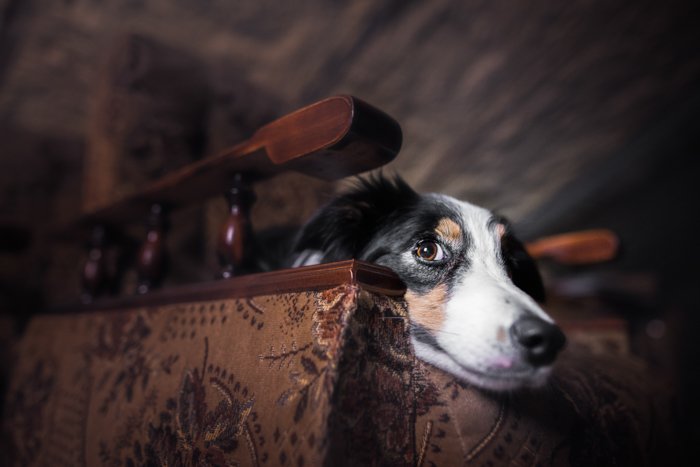
How to Take Pet Photography With Your Smartphone
Smartphone pet photography can be a great way to capture precious moments. It is the gadget you have with you most, if not all, of the time.
Try different photo editing apps, and make the most of natural light.
When photographing anything, you need to look for different perspectives. Try taking photos from your pet’s eye level to make them comfortable. This also helps to enhance the personality of the animal.
Use simple backgrounds to avoid unflattering photos. And always focus on the eyes of the pet. But never use a flash, as it can be distracting.
Always be patient during the photo shoot. Your furry friend will need that. And you don’t have to aim to get professional photographs from your smartphone. But you can definitely still have fun while shooting!
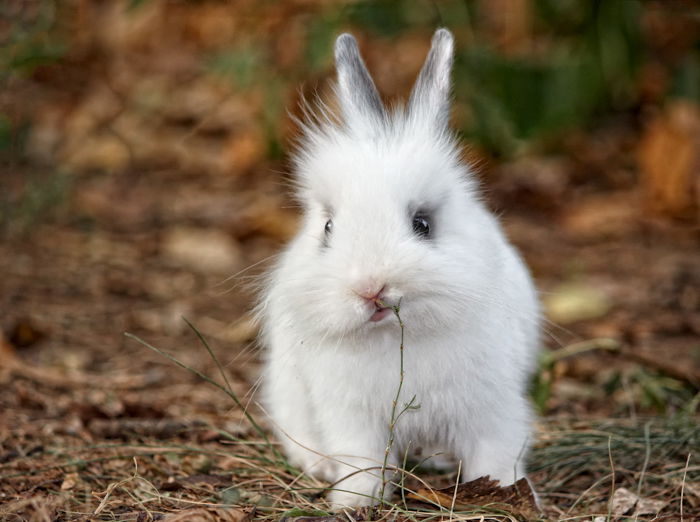
How to Get Amazing Dog Photography Action Shots
Taking action shots of your dog is a challenging task. Animals are unpredictable, fast, and sometimes clumsy. And they don’t think about their expressions or that you’re photographing them.
But if you are prepared, you can capture exciting and funny memories.
You need a fast shutter speed to freeze the moment. And don’t be afraid to ask the dog’s owner to help make the dogs look more athletic in the pictures. They often know best how to get their dogs moving.
Pay attention to the composition in your pictures. And leave lots of negative space to create a sense of movement.
You have lots of freedom with these shots. But you should always prioritize the dog’s safety during the photo shoot.
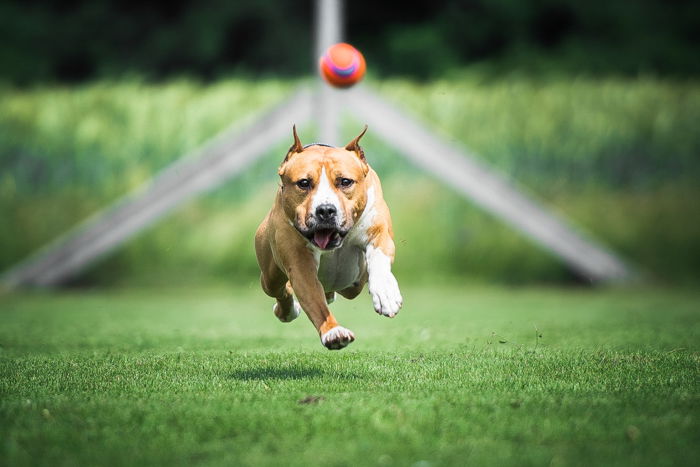
30 Unique Animal Photography Examples to Inspire You
Looking to capture unique images? Then you’re in the right place. Here, we have 30 of the best examples of animals looking their best. You are going to love them! Use them to get the most out of your pet photography.
You don’t necessarily have to look for inspiration by looking at pet photos. Wild animals can behave and pose quite similarly to pets. So pet photographers can use them as templates for their own photos.
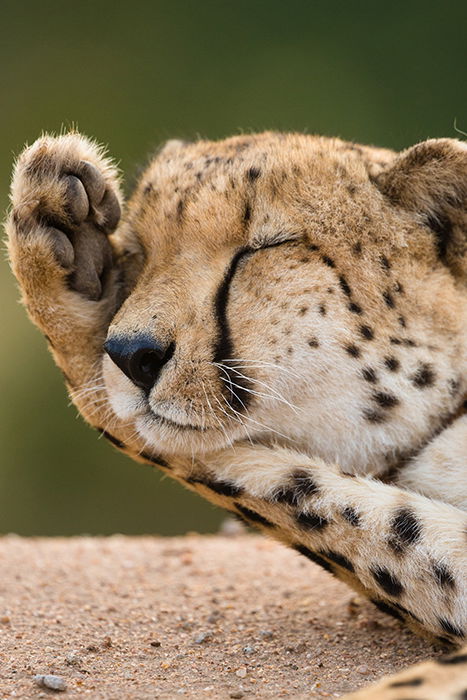
8 Quick Tips to Improve Your Pet Photography
Pet photography is popular and profitable. But one of the main difficulties with photographing animals is our inability to communicate with them. Plus, they have unpredictable natures.
So to capture good animal photographs, it is important to be prepared with the right tools. This includes the right camera, lenses, and technique:
- Cameras used for pet photography should have good low-light abilities for indoor studio sessions. And they should have higher ISOs for darker images produced by higher shutter speeds.
- The most common lenses for animal photography are the 50mm, 85mm, and 70-200mm lenses. A 24-70mm is perfect for close-ups and wide captures.
- A filter on your lens ensures the glass is safe from animal interference or curiosity.
- We recommend knee pads for taking low-angle shots.
- High shutter speeds, burst mode, and continuous focus work best for pet photography. They help to capture the right moment.
- Use panning to capture scampering pets. This is moving the camera horizontally with the subject’s movement. It takes practice to get good shots.
- Continuous lighting is better than flashes or strobes for animal photography. This is because it is less distressing. Plus, it is softer, lets the animals’ eyes adjust, and is silent.
- Rectangular or octagonal softboxes are good to add to continuous lights. They’re used often in pet photography.
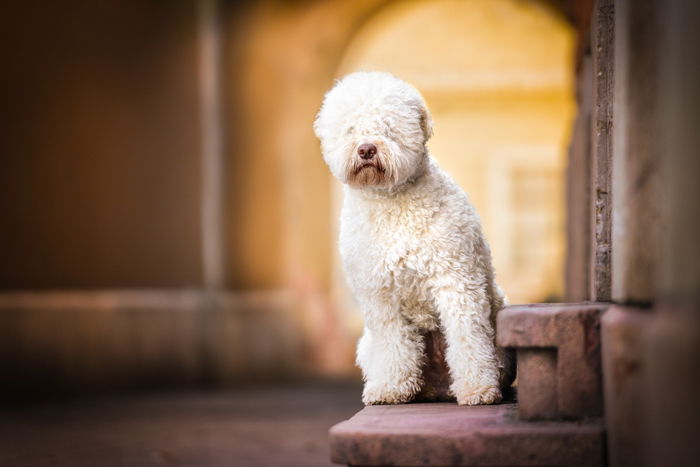
15 Dog Photography Tips for Perfect Pet Portraits!
To get the most from your dog photography, you need to know when your dog is active throughout the day. A lot depends on their personality and habits.
When they are calmer and more relaxed, this is a perfect time for portraits.
The action shots come when they have an abundance of energy. So schedule and plan around these times, depending on your desired shots.
Other ideas you should consider? Capture the owner-pet relationship, find inspiration in natural poses, or go down to the dog’s eye level.
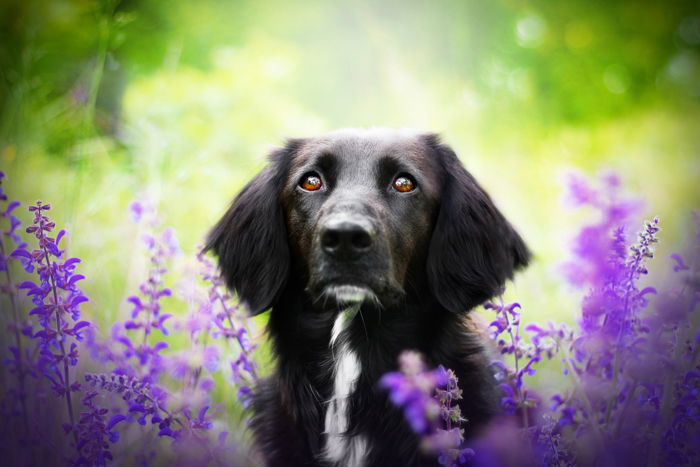
15 Tips For Taking Beautiful Horse Photography
Cats and dogs are the most common pets. But some people have horses!
Horses can be challenging to photograph as they are (generally) much bigger than the average dog. They have different behaviors and need to be treated differently.
You should start by getting comfortable with horses while always paying attention to safety.
Burst mode and continuous focus will make your job easier. But be careful with using flash. In fact, it’s best to avoid it. You wouldn’t want to scare the horses.
Don’t forget detail shots. Choose your background wisely. And try capturing some action photos. This way, your photo session will be diverse. And horse owners are going to love that!
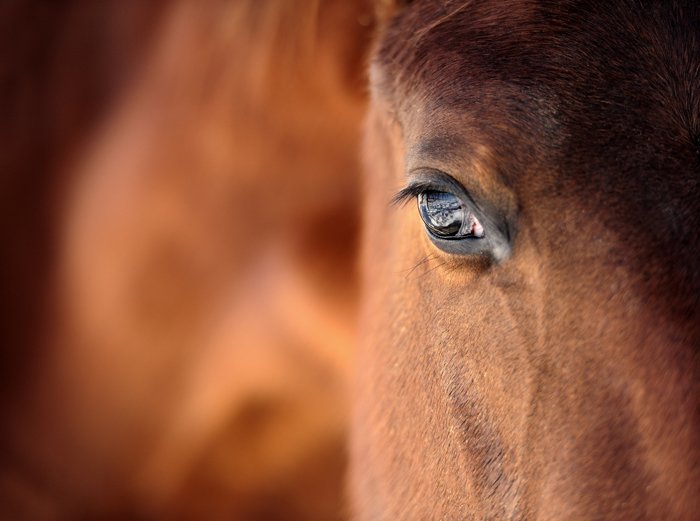
11 Tips for Improving Your Cat Photography Skills
Cats are a little more difficult to photograph than dogs. They make their own waves.
If you find they are happy with their location, move around. Capture them from different angles and perspectives to add that punch to your series.
Use a semi-automatic mode and try continuous shooting mode. Focus on details, like the eyes or the paws.
As cats are very agile creatures with lots of personalities. So your photography will benefit from a multitude of angles and ideas.
Be patient and always be ready! Cats can be really funny. And you don’t want to miss their best moments.
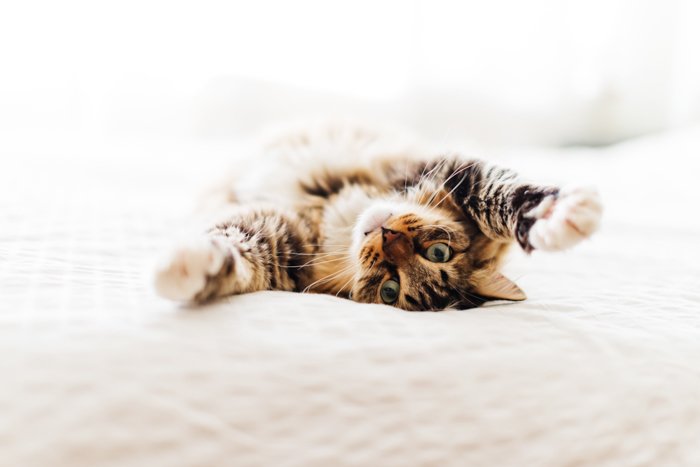
How to Make Use of Perspective in Pet Photography
There is a simple way to keep your images interesting and separate them from the crowd.
Most people with a camera tend to photograph at their eye level. But that will never show a subject or scenario in an interesting light. This is because we all see the world from that same angle.
So get down on the ground and photograph that puppy at his eye level. Or shoot from down below or up above. Experiment with different angles, different compositions, and different lenses.
Your viewers rarely, if at all, see the world from these perspectives.
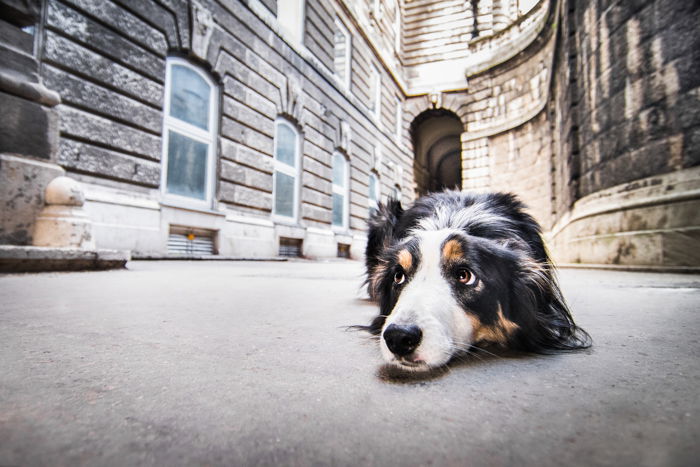
How to Get Creative With Pet Portraits
Even if you’re not a professional photographer, you can take wildly creative pet portraits with the help of these tips.
Invite your pet’s best friend! Interactions with other dogs, cats, or other species can look cute in your photos.
You can try costumes as long as they are comfortable for the pet. Try enhancing its personality, or you can even make it look like you.
Also, don’t be afraid to manipulate your images and use Photoshop if your idea requires it.
Everyone’s going to love your creative photographs!
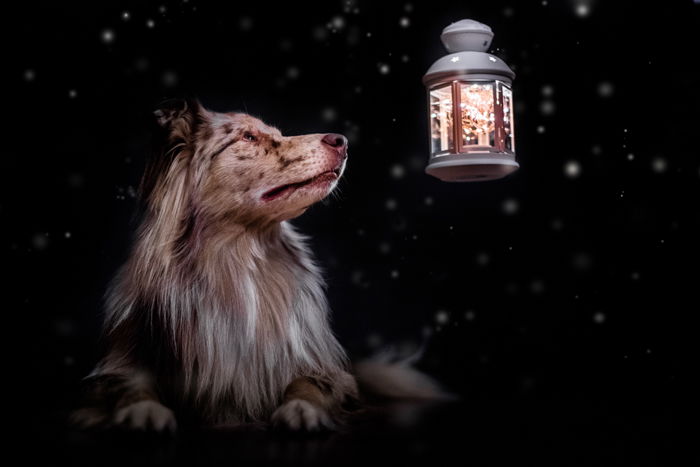
30 Adorable Pet Photography Ideas to Inspire You
We all need some inspiration from time to time. It helps to see what other people have come up with. It might give you the perfect idea.
Pinterest is also a great place to look. Hundreds of thousands of cats are in all sorts of poses from all kinds of perspectives.
You shouldn’t necessarily copy them. Try to twist and form them to fit your own personal style!
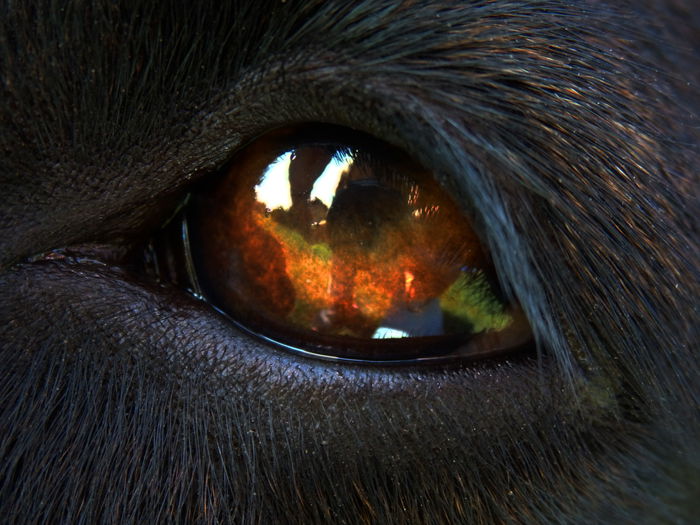
7 Tips for Photographers Working With Difficult Pets
Pets are like furry children. They won’t always do what you want.
You must identify the problem if you find a pet difficult to work with.
A tired dog is a good dog. They will sit still for longer and won’t feel the need to dash off at a moment’s notice. Ask the owner to tire out their pet before the photo session.
A telephoto lens or trying a new perspective or composition is a great help to anyone dealing with difficult pets.
Toys and treats can also save you from a lot of headaches!
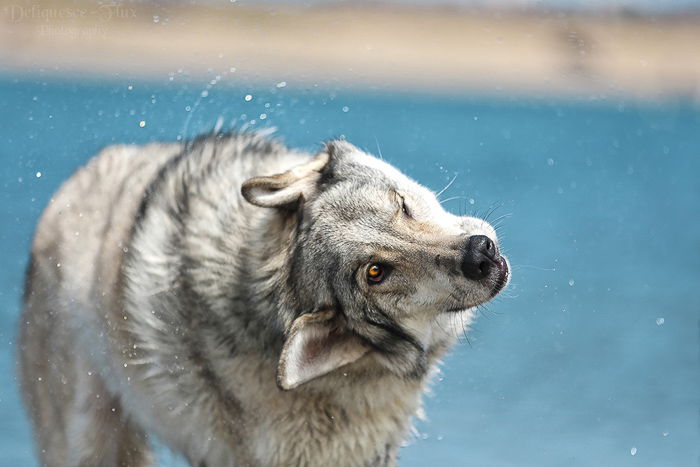
Pet Photography Business
6 Things to Keep in Mind Before Starting a Pet Photography Business
A pet photography business is a great idea if you like photographing animals.
Talent will always be the number one rule to success, but you can’t survive on talent alone.
It’s best to take your business seriously because lots depend on how you build it up.
Sharing your images on your website is a start. Instagram, Facebook, and Twitter are the next steps. Social media is the area that you need to own without going overboard.
But of course, you have to pay attention to the law, have a working business plan and always improve yourself.
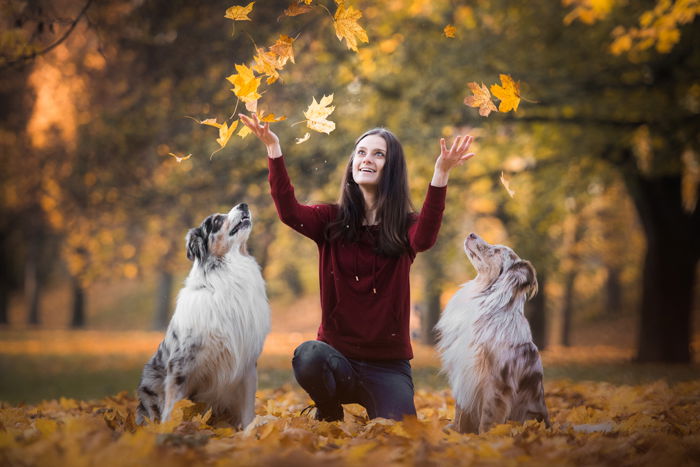
Conclusion: The Ultimate Guide to Pet Photography
People love their pets and love showing them off. Instagram, and any other social media platform, are full of portraits of dogs or cats or even less common animals, like rabbits.
We all love looking at these images, as they can cheer anyone up.
Always focus on the personality of the animals. You can photograph them in natural light or a pet photography studio. And you can find different tricks and get creative. Our pet photography tips will help you down this road!
